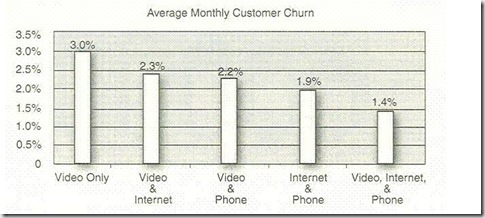There is an interesting question. First, you have to put a definition on what social media is.
This might seem like a silly thing to do for some, but I imagine if you ask the CFO of any business (big or small) what their definition of Social Media is, you’ll get a funny look like, “Huh? What? Why are you wasting my time with that kind of question? I have all this red ink and you want to talk about what?”
So here it goes. Social Media, defined in part within Wikipedia:
“Primarily, social media depend on interactions between people as the discussion and integration of words to build shared-meaning, using technology as a conduit.
Social media utilities create opportunities for the use of both inductive and deductive logic by their users. Claims or warrants are quickly transitioned into generalizations due to the manner in which shared statements are posted and viewed by all. The speed of communication, breadth, and depth, and ability to see how the words build a case solicits the use of rhetoric. Induction is frequently used as a means to validate or authenticate different users’ statements and words. Rhetoric is an important part of today’s language in social media.”
Hmmm. Sounds like a text book entry (under GAAP Principals), so let me translate.
“People sharing insight, ideas, know how and content with one another using a variety of content mediums that reside on the Internet.”
There. Social Media in a nutshell.
Why is the reality of social media activity important and why should our fictional CFO care? For that matter, why should anyone else care besides the marketer?
Why? Because social media and the knowledge that can come out of it provides the business a significant strategic advantage. So who else should care and why?
Well, here are a few, other than our CFO and the CMO/marketing team of course.
1. CEO. Social media activity is an accurate barometer of brand equity and corporate reputation. What social media is comprised of (i.e. what’s inside of UGC) is telling as to the company’s current profitability and future performance. How hard does the company need to work to maintain market share? Lots goes into this analysis but social media provides a very real comparable metric to help measure whether the company’s internal metrics are accurate and why. Being able for the CEO to provide real insight at a shareholder meeting or an analyst conference call is important. It’s doubtful the CEO will reference his source as a social media output, but that’s not the point here. Social media’s underlying value is.
2. COO. Why? Social media activity both internally and externally can indicate well the business and its resources are aligned within the marketplace to deliver on projections, plans and results. Social media metrics can be compared with operational plans to see if the plans were realistic in the first place, on target or slightly off. Social media tools and metrics can offer operators ‘real time’ adjustment indices if used properly.
3. EVP of HR. Social media isn’t limited to external venues. How engaged is your brand and your team. How collaborative are they (or are they capable of being based on the infrastructures and culture in which they operate)? There are some big brands that are absolutely committed to this. One old-line brand, a leading insurance provider even makes this a metric that is presented to the board of directors along with things like net profit.
4. EVP of Sales. Sales has a lot it can learn from social media. Value proposition is best delivered from the mouths of customers themselves, as the sales department always has a primary goal-close the transaction.
5. VP of CRM. Once the sale is closed, who owns the customer? Most likely the CRM team does. They get measured on support costs, call duration in-bound requests, churn and a whole lot of other customer-stickiness metrics. Social media helps to deflect a lot of these costs, as well as, understand what’s driving inbound requests and churn. Microsoft gets this.
5. EVP or VP or Product Development. Necessity is the mother of invention. If you want something to work a certain way, you create a work around. Sometimes, understanding what those work arounds are helps teams innovate. Sometimes, it’s just asking for ideas. www.ideastorm.com is the obvious example. There are dozens of others…good and bad (i.e. that work and don’t work). Intuit works. MyStarbucksidea.com doesn’t.
7. Institutional and individual investors. Another part of doing good homework. What are customers saying and how well is the brand listening? There is an old-line manufacturing truism. To understand how well run a manufacturing company is, simply look at it’s loading dock. A neat and orderly loading dock says the business is on top of things. Broken pallets, trash and disarray speaks volumes, You’d be surprised how many savvy investors who bet (or did before the meltdown) on manufacturers did this kind of homework. Social media can provide the same sort of insight if approached correctly.
Here’s a proof point. This factoid was provided by my friend and colleague Barak Libai, professor at Tel Aviv University and Advisor to WOMMA and is taken from a good book by Gupta and Lehmann on “Managing Customers as Investments” and relates to Cox Communications.

You can see that the defection rate for customers who use the product in a wider way is much lower. Much of this wider use comes from formal and informal social media activities (people helping, showing and spreading the word. This can translate to double the lifetime value!
Double…that’s a lot of coin, my friend.
Can social media rewrite business rules? I am here to tell you that that it already is. So where are you? Ahead of the curve or behind it?

